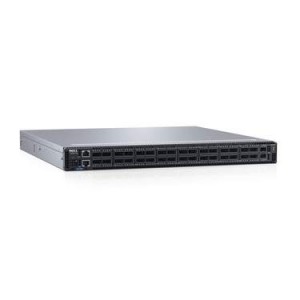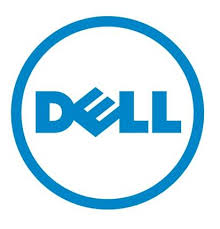 Dell this week extended its arsenal of data center Ethernet switches, highlighted by a 100G device with ports dividable into 25G and 50G channels.
Dell this week extended its arsenal of data center Ethernet switches, highlighted by a 100G device with ports dividable into 25G and 50G channels.
Twenty-five gigabit and 50G Ethernet are becoming popular options for data centers looking to fill the bandwidth gap between 10G and 40G for server-to-top-of-rack switch connectivity. Products supporting 25/50G are intended to scale network bandwidth to cloud server and storage endpoints, where workloads are expected to surpass the capacity of 10/40G Ethernet links deployed today.
These products are also expected to lower the cost per gigabit and power consumption of these links in that they support the same Ethernet link protocol lane structure as 100G, which is four 25G lanes and two 50G lanes. Several vendors formed an industry consortium to back development of 25/50G data center products, and the IEEE recently formed a 25/50G study group.
Dell’s initial entry into this market is the Z9100 switch. The Z9100 is a 1RU fixed form factor switch with either 32 100G, 64 50G, 32 40G, 128 25G or 128 + 2 ports of 10G using a breakout cable. The switch is designed for the aggregation and access layers in a data center network.
The Z9100 will go up against Cisco’s Nexus 9504 and Juniper’s new QFX10002 switches. Dell claims significant port density gains per RU over those switches.
Another new switch is the Dell S4048. This is a low-latency 10/40G top-of-rack switch with large hardware tables, VXLAN and expanded buffering designed for Web and cloud service providers with Linux and OpenSource-heavy environments. It sports 48 dual-speed 1/10G ports and six 40G uplinks.
The third offering is the Dell S3048, a 1/10G Ethernet top-of-rack switch also built for Web and cloud service providers with Linux and open source-heavy environments. The S3038 features 48 1000Base-T ports supporting 10M/100M/1000Mbps bandwidths, and four 10G SFP+ uplinks. It comes with Dell’s OS9 operating system and feature set, including Virtual Link Trunking, OpenFlow, OpenAutomation, Cloud Stack Integration with OpenStack, Microsoft, VMware and Docker, among others.
All of these switches support the Open Network Install Environment (ONIE) to allow for install of pre-qualified third party operating systems. With ONIE loading, these networking switches can be booted without using proprietary means, Dell says.
The switches are tested and validated with third party operating systems and network virtualization software from Dell partners Cumulus Networks, Big Switch Networks, VMware and Midokura.
Dell also added to that partner roster this week with the inclusion of IP Infusion, a developer of network operating system software for enterprises and service providers. IP Infusion’s OcNOS includes support for MPLS and VPLS for WAN, VPN and data center interconnect applications.
The Dell Z9100 is currently in customer trials and is expected to be available in the second half of 2015. It costs $5,000 per port without optics.
The Dell S4048, including 48x10G and 6x40G or 72x10G ports and larger hardware tables, VXLAN and expanding buffering are available now. It costs $18,500.
The Dell S3048, including 48 1GBase-T and 4x10G-SFP ports will be available in May. It costs $8,000.









